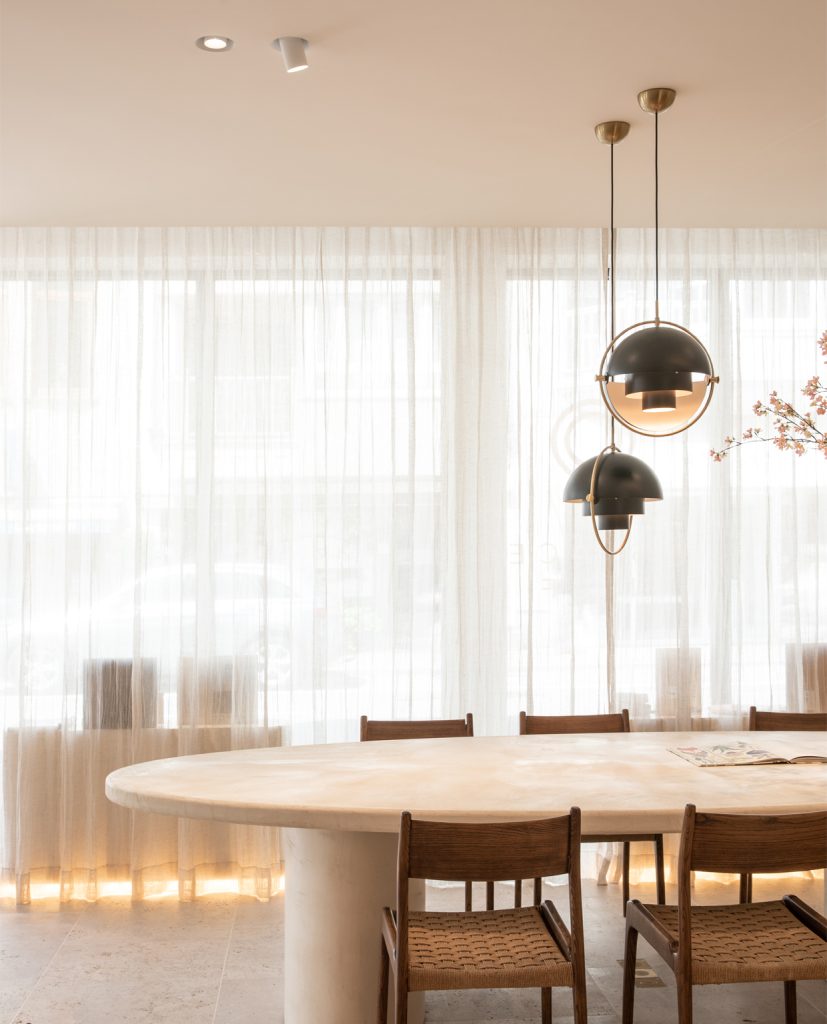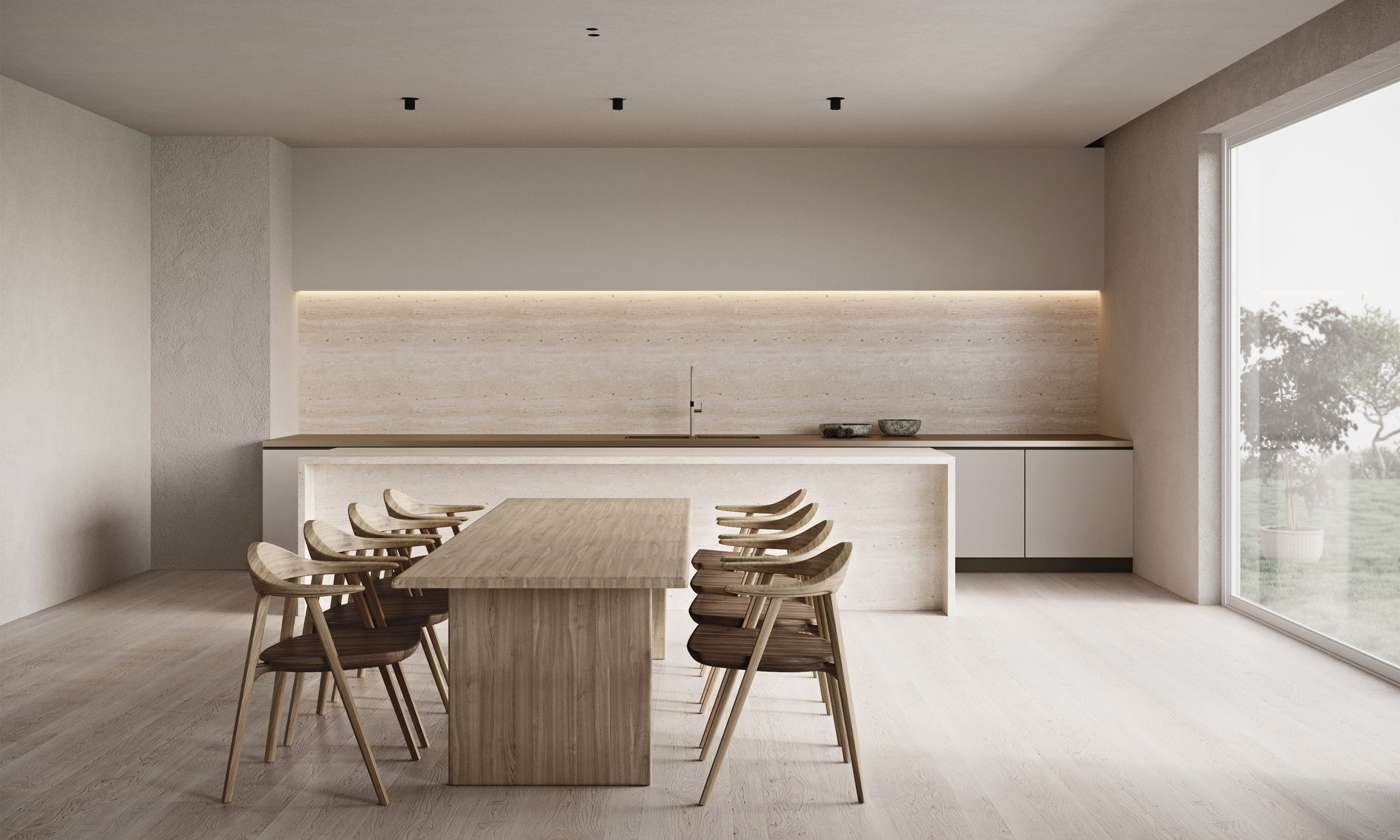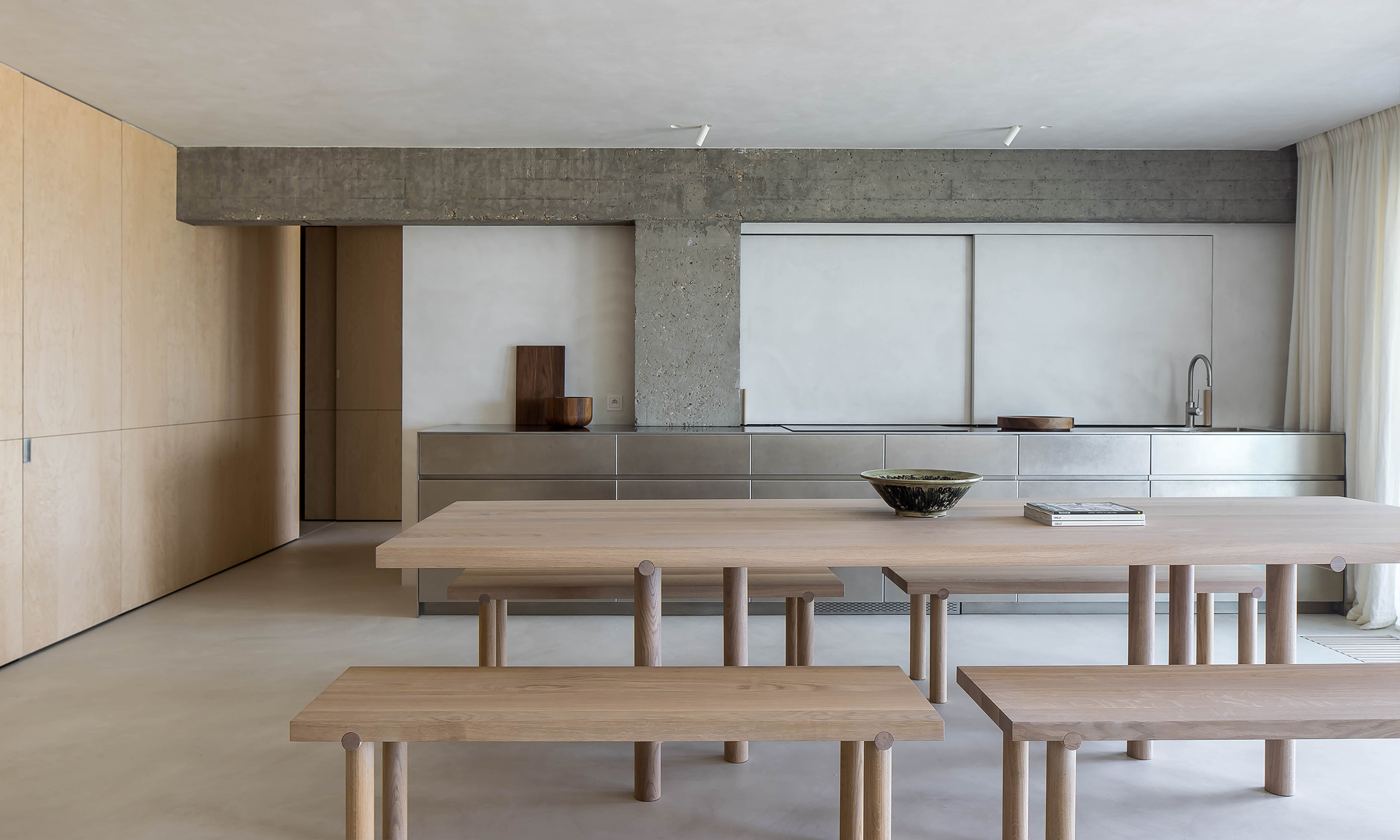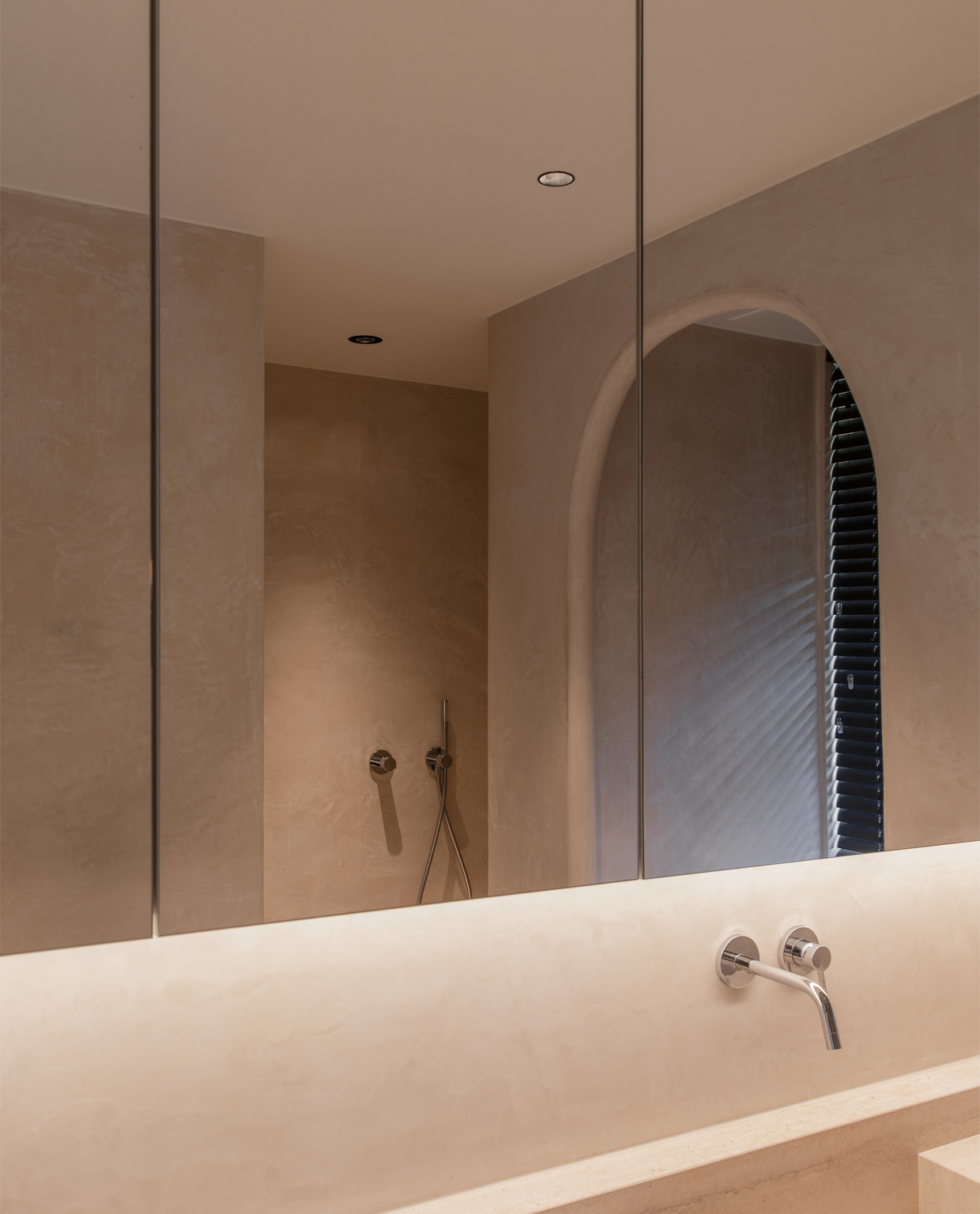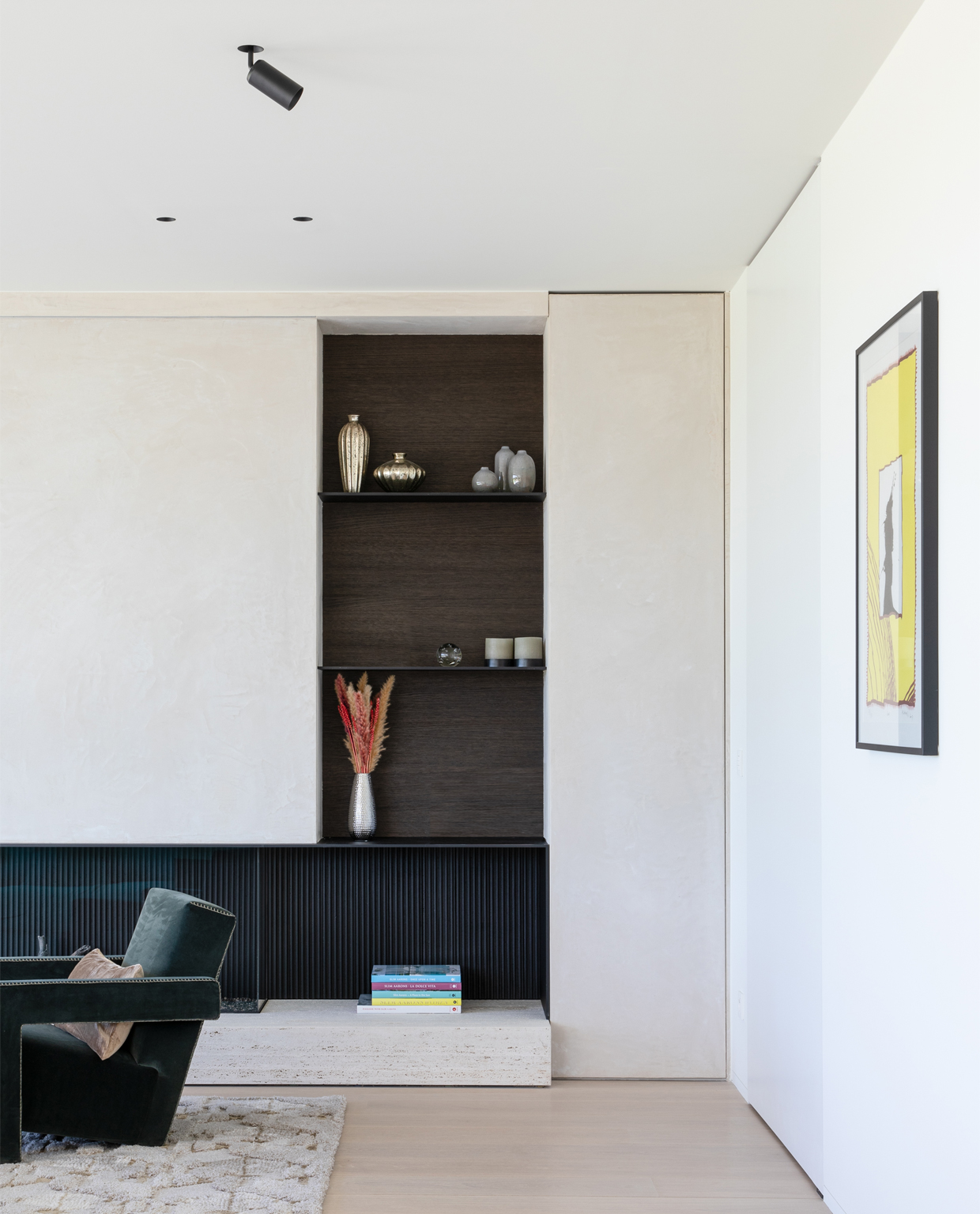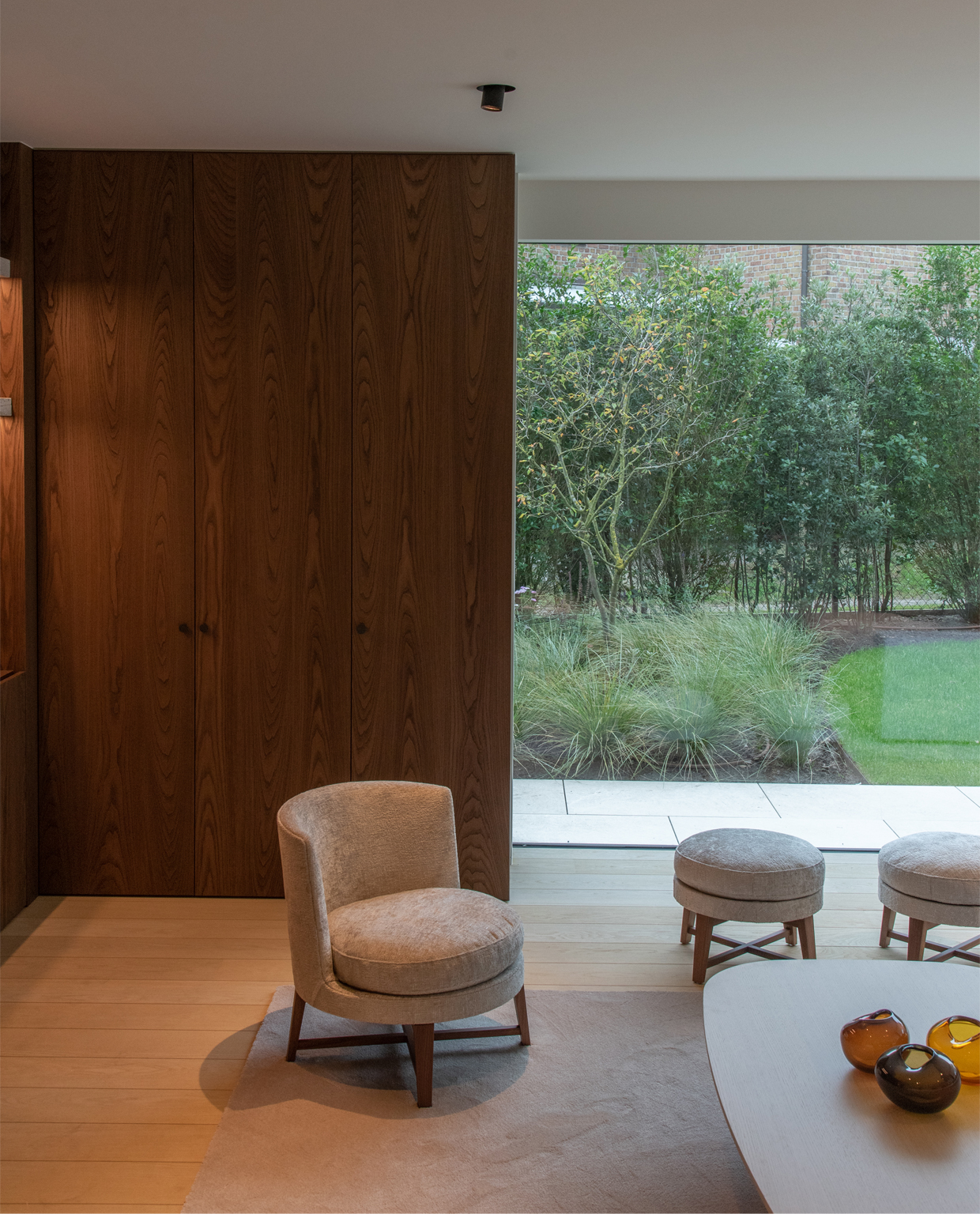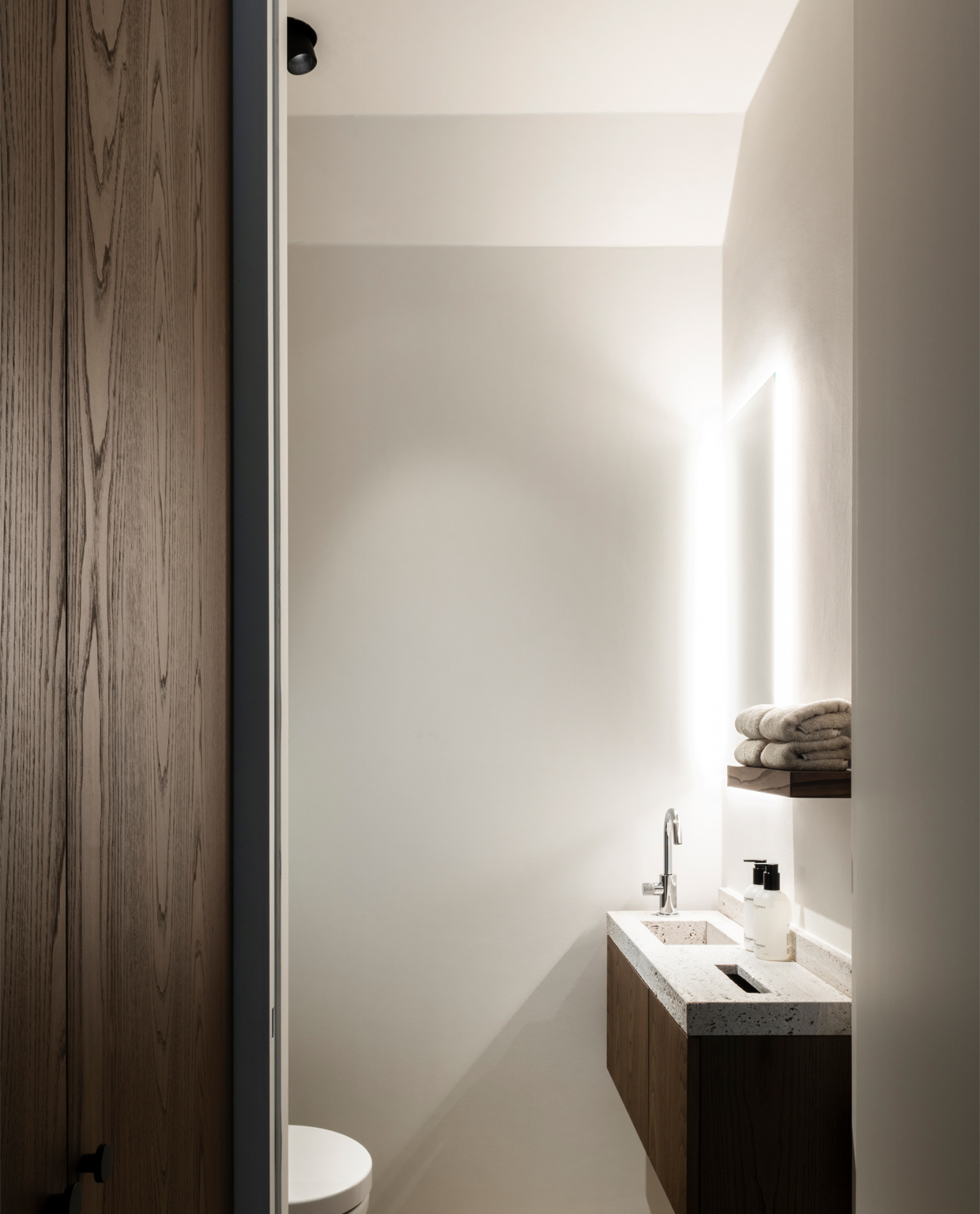light + ventilation creating cleaner ceilings
It is our aim to highlight what matters most without being present. The combination of products helps architects and interior architects to create cleaner ceilings and ultimately more calming homes. Light + ventilation has changed the way we look at ventilation valves more than ever.
This aesthetic luminaire delivers sublime lighting while also providing ventilation. The invisible air supply and extraction (up to 50 m³/h) works for your bathroom, for your living room. For any room. This smart combination works with every ventilation system.
Keep scrolling to learn all about ventilation and how our combination product is the solution for seamless living below.
We believe every home needs ventilation,
but nobody wants to see ventilation valves.
— Thibault Renson
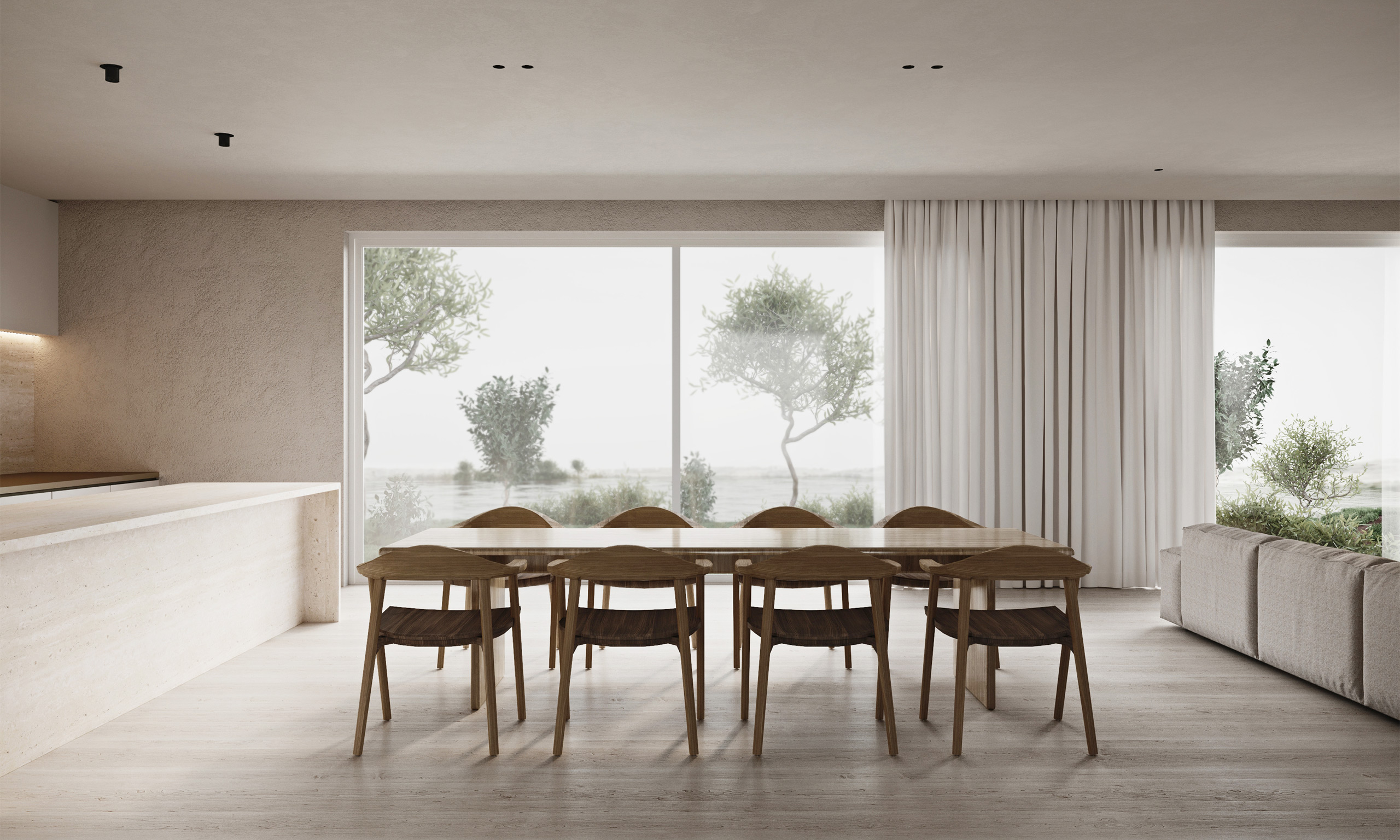
-
Why should you ventilate?
The main reason for ventilation is to positively influence indoor air quality. You spend 90% of the time inside.
So a healthy indoor climate is a must for a more carefree life. That’s where ventilation comes in to replace polluted (indoor) air with fresh (outdoor) air.Cooking is the primary contributor to indoor air pollution, but showering and breathing also contribute. Increasingly well-insulated and airtight homes also cause issues. The benefits of ventilation are numerous: improved concentration, fewer illnesses, increased energy, and better sleep.
Is airing through windows and doors a solution? No, it is not. It is a temporary and localized solution that also causes heat loss, resulting in higher energy bills. Controlled ventilation is a no-brainer. The basic principle is to extract polluted air from wet areas (bathroom, kitchen, toilet) and bring in fresh air to dry areas (bedrooms, living rooms) in both new constructions and renovations.
-
How does a ventilation system work?
First of all, it is important to know that ventilation can be achieved through different principles. Systems C and D are the most common. The difference between the two is in the supply of fresh outside air. In a system C, the supply occurs naturally, through window grilles in the living areas, such as bedroom, kitchen and living room. With ventilation system D, outside air is drawn in centrally by a ventilator and distributed through a duct system in the building to the various rooms.
In both systems, extraction is mechanical. Extraction points for contaminated air are standard in wet rooms, such as toilets, bathrooms, storage rooms, and kitchens. In System D, supplied outside air is mechanically heated using the heat from exhausted inside air, known as a heat recovery method.
For increased energy efficiency, there is also demand-driven and zonal ventilation. With demand-driven ventilation, extraction is controlled and only occurs when necessary, using built-in sensors (humidity, temperature, motion, CO2). Ventilation by zone, or room, is based on CO2 and moisture measurement. In these cases, we refer to systems C and D as smarter ventilation systems.
-
What does a normal ventilation valve do?
Ventilation valves, also known as air valves, are components of Systems C and D. They are placed on ventilation ducts and control the flow rate of clean air drawn in and polluted air extracted (also known as the flow rate).
Other questions?
Get in touch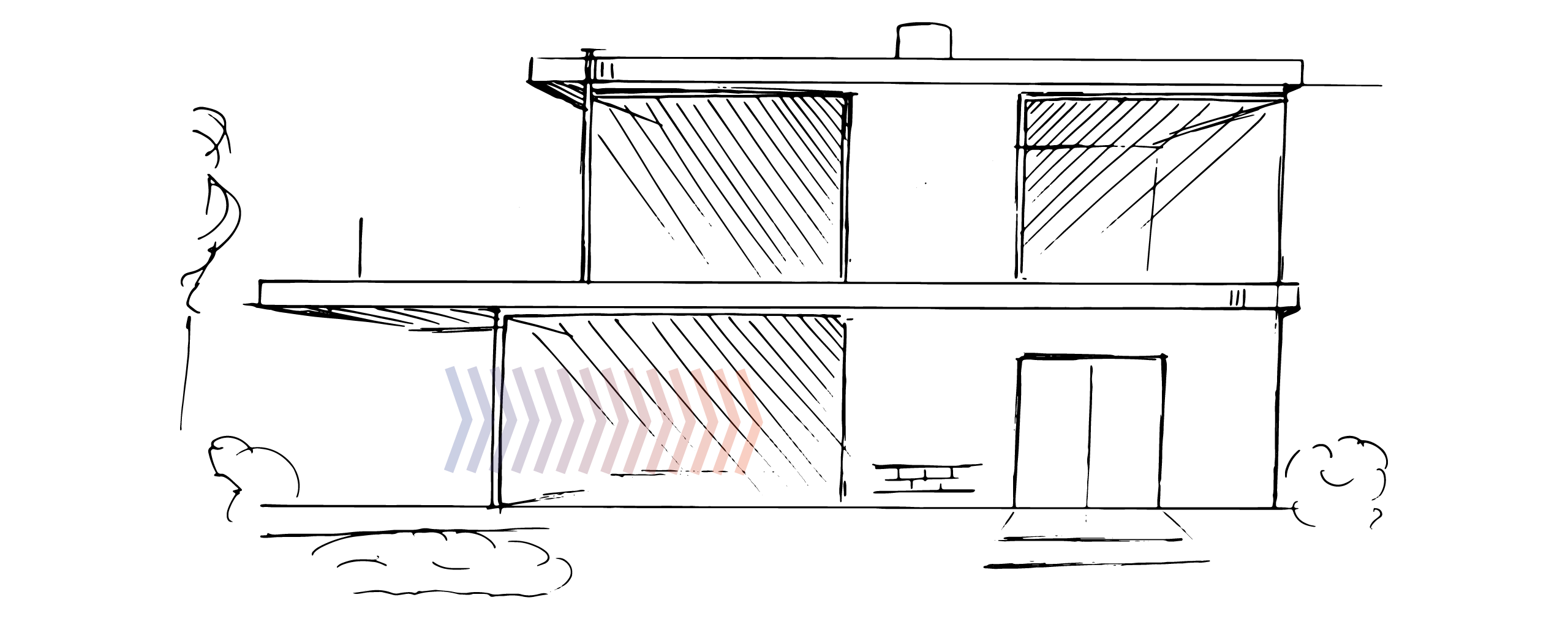
-
How does a ventilation valve function?
You have to set the desired flow rate. That depends on how many cubic metres of air per hour need to be refreshed in the house. The further you open a ventilation valve, the higher the flow rate in the relevant room. Once you set them up in the beginning, that will be enough.
You will notice them mostly in wet rooms like the bathroom, the toilet and the kitchen. Here moist and/or polluted air is efficiently extracted. In the case of balanced ventilation, exactly the same amount of fresh air is then supplied via another air valve in the same room. Learn more about our worthy, aesthetic replacement for ventilation valves in the following question.
-
Why shouldn’t a valve be placed above your sofa?
Most valves release air downwards, which can be inconvenient. It is better to place valves further away from areas where people frequently sit, such as above a sofa. Additionally, for a more minimalistic and seamless look, valves should be mounted on the outside of the ceiling.
Other questions?
Get in touch
-
Why should supply and extraction valves not be located too close together in an open space?
The kitchen and living room are typically located next to each other in a home. An extraction point is typically placed in the kitchen, and a supply point in the living room. It is important to ensure that the supply and exhaust valves are not too close to one another, as this can compromise the quality of your indoor climate. The supply point should be located as far as possible from the extraction point to ensure that the entire room can be properly ventilated.
Other questions?
Get in touch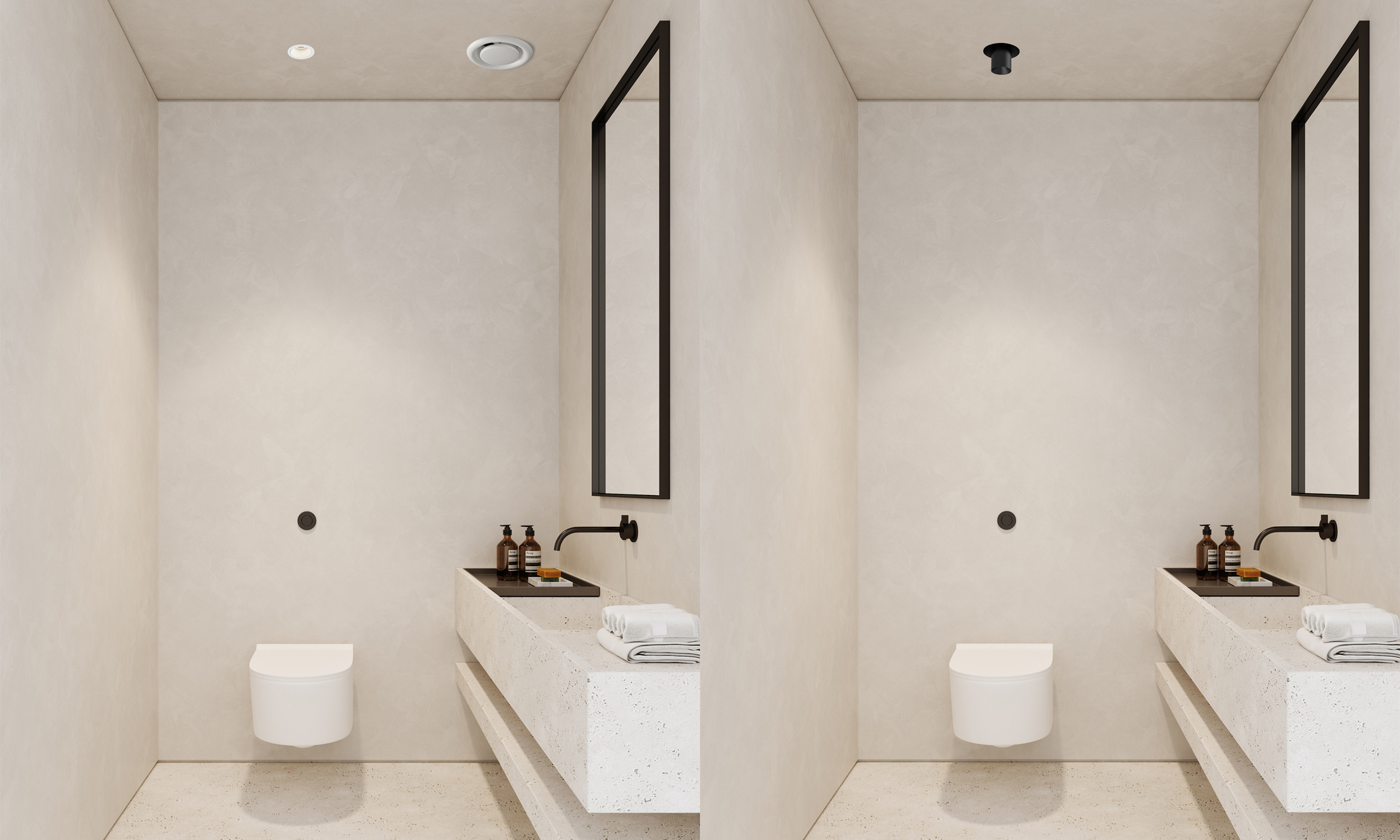
We didn’t try to make a more beautiful ventilation valve.
We just wanted to make them disappear.
— Thibault Renson
some things just look better together
And that’s why we created light + ventilation, in which the ventilation is finely adjustable.
The world’s first good looking ventilation valve, where light and ventilation are combined into one fixture.
Your ceiling cannot get any more clean and purified with this two-in-one solution.
The result is a more serene ceiling and ultimately, a more calming home.
aesthetically distinctive
In the sense that this is a lighting fixture you wouldn’t think would have ventilation involved.
The difference between a light only and light + ventilation is never noticeable to the naked eye.
Discover our full collection of designer lighting fixtures here.
high-quality materials
During the process, we always focus on form, function and highly durable materials that make the difference.
Quality is guaranteed. Light + ventilation is made from precision milled, anodised aluminium.
The lens is made of glass and there is no use of plastic.
Project based only, prado offers fixtures in exclusive finishes on pure brass.
-
Why does the choice of light + ventilation make more sense than a traditional ventilation valve?
Ventilation means ventilation valves. We believe every home needs ventilation, but no one wants to see ventilation valves. And that’s why we created ‘light + ventilation’, in which the ventilation is finely adjustable. The result is a a more serene ceiling and ultimately, a more calming home.
Our light + ventilation is the world’s first visually pleasing ventilation valve, with an invisible air supply of up to 50 m³/h. This combination works in any room, including bathrooms and showers, thanks to its IP65 rating.
-
How is the light + ventilation valve powered?
The light + ventilation valve is powered via a valve adapter and uses a prado connector (included with the Ø108 plaster ring) to connect to the Ø16 preflex. This ensures that there is no air flow lost and prevents concrete from entering the ventilation duct. The valve is IP65 rated, allowing it to be used in wet areas such as showers. Watch the installation video to learn more about installation.
-
How do you install the light + ventilation valve?
The Ø108 plaster ring fits into every Ø125 ventilation duct. Watch the installation video.
-
Can the light + ventilation valve be used for air supply?
Our light + ventilation valve is designed for air extraction of up to 50m³/h and air supply of up to 30m³/h. Just like most regular ventilation valves, a downward airflow isn’t suited for installation in or above comfort zones. So make sure to correctly position air supply valves in the room, not above seating areas for example. Ventilation-wise, this is widely not recommended.
More information and capacity graphs on the technical sheet. We offer a free service to make your ventilation and lighting plan. We have in-depth knowledge through years of experience in home lighting and ventilation. Contact us to take advantage of this free service.
-
Which ventilation brands can I use with light + ventilation?
We work independent of any brand. It works for example with Renson or Duco. With any ventilation brand. Our light + ventilation products are compatible with any ventilation system. Our light + ventilation products can be placed into any Ø125 valve adapter.
Other questions?
Get in touchWe aim to develop products so pure and simple,
one starts wondering why they weren’t created earlier
— Gauthier Lambrecht
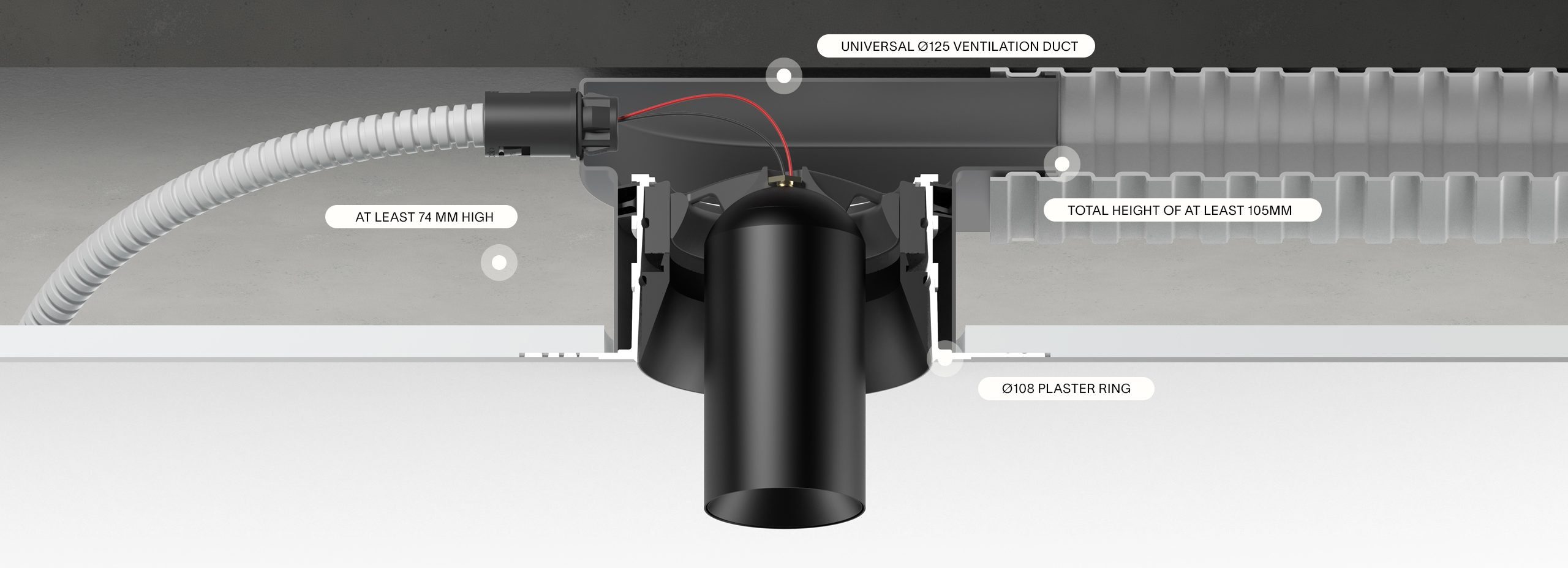
-
What is the minimal height required to install a light + ventilation valve?
The vertical part of the ventilation adapter (before the start of the turn) must be at least 74 mm high for the plaster ring to be installed correctly. The connector can’t be placed in this zone. Thanks to its very low height 74 mm, it can be installed in false ceilings. With most valve adapters, this means you need a total height of at least 105mm. Check the Ø108 plaster ring installation instruction or watch the installation video to learn more about installation.
-
Does light + ventilation cause noise pollution?
The best ventilation system can make noise. Everything depends on how the ducts are placed. The most common complaint within the ventilation sector is noise at pulsation. Any fine opening can cause whistling noises. If in doubt, send us the duct plan. We offer the free service to make your ventilation and lighting plan. Contact us to take advantage of this free service.
People experience noise pollution from 30 dB. Under the worst installation conditions, light + ventilation has 27 dB, which is still below the noise standard. And thus much quieter than most designer valves.
If the condition above is satisfied, we can say that our light + ventilation is quieter than a regular valve. This is because there is general air flow and therefore no noise is noticeable. The many airflow sutdies conducted in our lab confirm this.
-
How to clean the light + ventilation?
Any ventilation system will generate some dust over time, but to reduce this dust, you can take the following measures:
> Dust light + ventilation with a dry cloth. Read below why dusting from the outside is enough on a regular basis.
> Change the filters regularly.
> Since light + ventilation is removable, you can easily clean the ducts every few years.
-
Does the light + ventilation itself cause dust accumulation?
Multiple studies in our laboratory confirm that dust accumulation is minimised. Dust sticks when there is acceleration, constriction and collision. Standard ventilation grilles have a constriction between the adhesive and the ventilation valve resulting in dust. Thanks to the design that is wide at the bottom and narrow at the top with light + ventilation, this is not the case.
The constriction is at the back of the spot near the adjustment mechanism in the ventilation duct. Due to the heat of the LED, the moisture dries up and dust enters the duct. When pulsed, it is then simply blown out. Therefore, just dusting the lighting fixture itself is sufficient.
-
How is the number of light + ventilation fixtures determined?
Our light + ventilation is good for 50 m³/h. To illustrate, we give a practical example. On average, you’ll need one in your toilet, one in your bathroom and two in every kitchen. Of course, this varies project by project. As a service, our experienced team offers free support for your lighting and ventilation plans. Contact us to take advantage of this free service.
